It appears a logical conclusion that after the independence of India, and the departure of the British, the princely states would be merged with the Union of India. But there was no thought about merger at that time. The feeling was that British India would become independent India, and princely India would henceforth have relations with Government of India instead of the British Crown. There was some conjecture about the Upper House of Parliament being the Chamber of Princes. The decision for merger, then, came as a bolt from the blue.
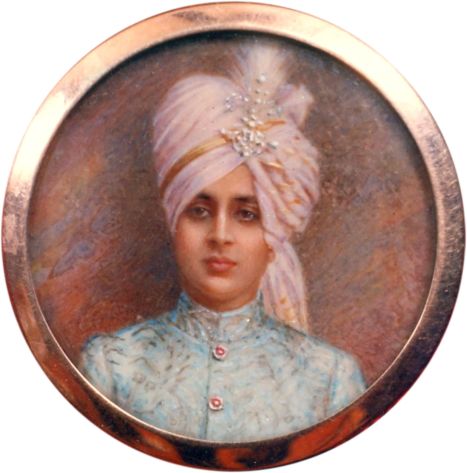
Maharaja Vijaysinhji of Rajpipla
Maharaja Vijaysinhji of Rajpipla had ruled since 1915 and, with so much care and diligence, developed enormous infrastructure and carried out a series of reforms. The stately high school, civil hospital, railway station, power house and water works, bazaar, public garden, to name a few, still stand testimony to his devotion to his State and people. He was even raising investment for building a dam across the River Narmada, which became a precursor to the gigantic Sardar Sarovar in later decades.
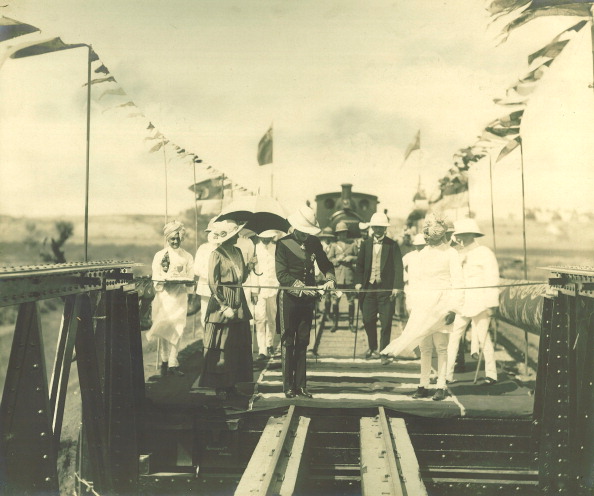
Rajpipla State Railway bridge over the River Karjan being inaugurated in February 1917
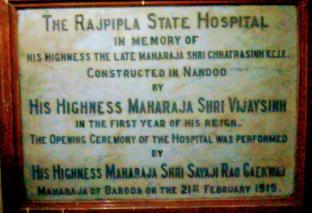
Rajpipla Civil Hospital plaque 1919

Rajpipla High School
The Gohil Rajput dynasty, tracing its origin to the middle of the 6th century and beyond, had held sway over the principality of Rajpipla for 600 years, weathering the assaults of the Sultans of Ahmedabad, the Mughals and Gaekwars of Baroda. Maharaja Vijaysinhji was the 37th Gohil Rajput ruler of Rajpipla in this unbroken line going back to the 1340s.
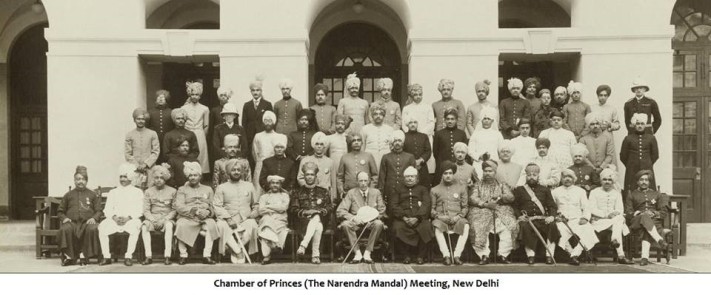
Chamber of Princes (Narendra Mandal), 25th February 1930. Maharaja Vijaysinhji of Rajpipla seated third from left
Yet, when it came to merging his State with India, Maharaja Vijaysinhji was ready to hand it all away. Apart from being a senior ruler, he had been a prominent member of the Chamber of Princes (Narendra Mandal) right since its inception in 1920. It, therefore, came as no surprise that Mr. V.P. Menon, Secretary to the Ministry of States headed by Sardar Vallabhbhai Patel approached Maharaja Vijaysinhji when it came to talks regarding merger. Mr. Menon wrote on page 142 of his book ‘The Story of Integration of Indian States’: “I went to Bombay on 17 March 1948. I had an informal meeting with the rulers. The first thing I did was to announce that the formal meetings with the rulers of the full jurisdictional States would be held not in the Bombay Secretariat, but at the residence of the Maharajah of Rajpipla (named ‘Palm Beach’ on Nepeansea Road, now Russian Consulate). This had a good effect. We met continuously for three days, the discussions generally extending into the late hours of the night”.
Elaborating further, Mr. Menon recounted on page 143 of his book: “After these discussions, the late Maharajah of Rajpipla expressed on behalf of the rulers their desire to integrate their States with the province of Bombay and made the following statement. (Exact words of HH Rajpipla):”
“We have the pleasure to inform you that, as rulers of Gujarat States, we believe our Mother Country and particularly Gujarat looks up to us to make all sacrifices in the wider interests of India as a whole. We, therefore, have cheerfully responded to the call of duty and decided to take the first step in forming the province of Maha Gujarat by integrating our States with the province of Bombay. We invoke God’s blessings on our decision”.
Maharaja Vijaysinhji thus signed the instrument of accession on 19 March 1948. Even before the formal merger on 10 June 1948, he handed over the administration of Rajpipla State to the Praja Mandal.
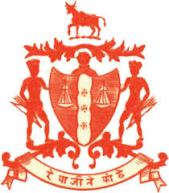
Rajpipla State coat of arms
Now, the Statue of Unity of Sardar Vallabhbhai Patel, the tallest in the world, is being inaugurated on 31 October by Prime Minister Narendra Modi on the Narmada riverbed in the Rajpipla area. The Narmada formed the northern boundary of Rajpipla State for the most part, and inscribed on the State’s coat of arms are the words ‘Revaji ne kaanthe’, meaning ‘On the banks of the holy Narmada’.
Further, Gujarat Government has decided to revive the airport Maharaja Vijaysinhji had built in the late 1920s in an area of 125 acres on the banks of the River Karjan. The airport fell into disuse after merger of Rajpipla with India in 1948. Only when Prime Minister Jawaharlal Nehru came to lay the foundation of the Sardar Sarovar in 1962 was it used. Now when the Statue of Unity of Sardar Patel is being inaugurated, Gujarat Government is reviving the very airport that Maharaja Vijaysinhji had built so many decades ago.
Maharaja Vijaysinhji played a huge role in the development of modern Rajpipla, and in the merger of princely states with the Union of India. With the Statue of Unity of Sardar Patel being inaugurated, the wheel seems to have come a full circle after seven decades. The government has plans to set up a top-class tourism zone in the area. There are fond hopes that history, heritage and culture will be showcased in a manner that Rajpipla will take its place in the tourism map like the erstwhile princely states of Jaipur, Jodhpur, Udaipur, among others, have in Rajasthan. It is a historic opportunity that must be seized with both hands.

Enlightening!
There is a lot of history and heritage that has to be showcased and put in public domain, Vandana.